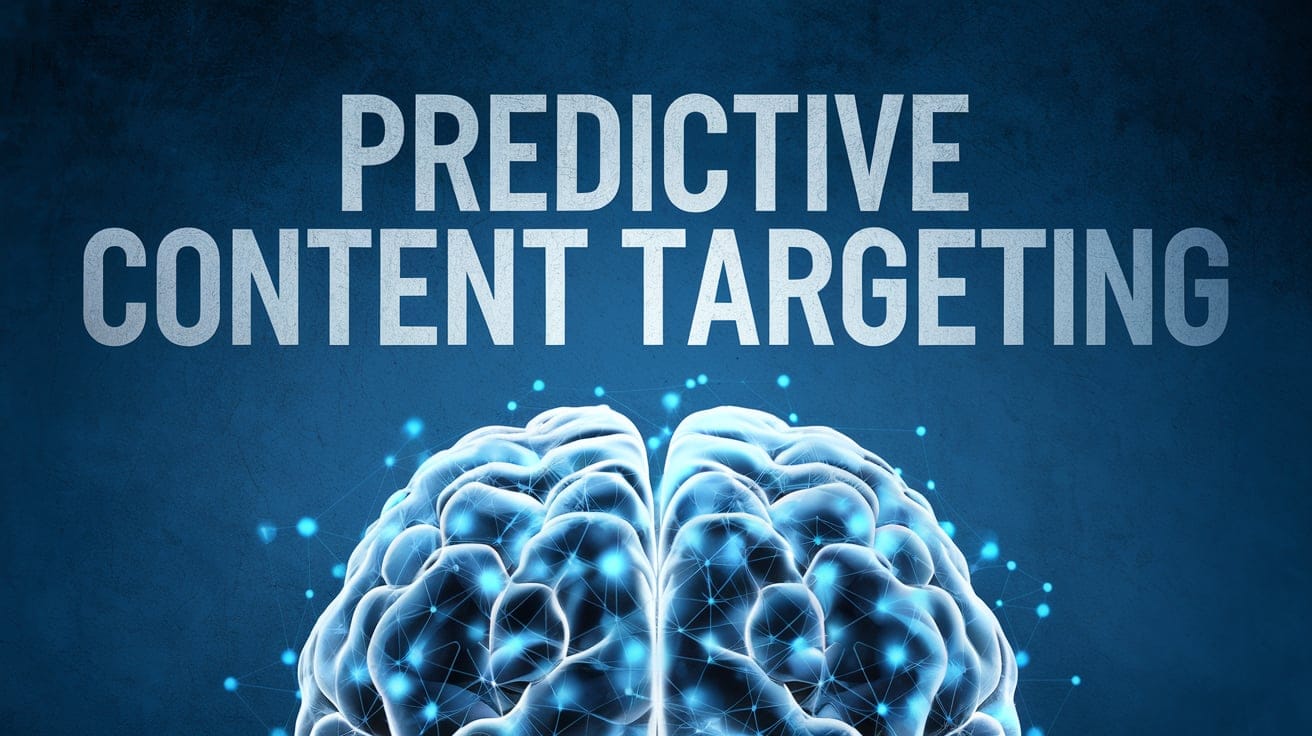

Are you ready to disrupt with AI? Join our Hackathon today! Click to Register
By WebOsmotic Team | Published on December 14, 2024
Summarize Article

Table of Contents
ToggleBusinesses need to remain ahead of the curve for possible effective communication with audiences. Predictive content targeting enters a revolutionary means in which the brand delivers the right content to the right people at the right time. But what exactly is it? And how can it transform your marketing strategy? In this blog, we are going to cover the most interesting topic. Let’s dive into this fascinating subject and explore its importance.
Predictive content targeting uses data analysis, artificial intelligence (AI), and machine learning to predict what form of content appeals to a specific audience segment. Looking at user behavior, preferences, and demographics, will assist marketers in creating and distributing personalized content to create engagement and conversion.
Consider it to be magic free of data in a crystal ball for your marketing strategy.
Let’s be honest; people are constantly bombarded with various content daily. Your message gets ignored if it doesn’t stand out. Predictive content targeting is to address this issue by ensuring that your content is relevant and timely; but what is the significance of it?
• Enhanced Personalization: Create a more meaningful touchpoint with your audience.
• Increased Engagement: Creates relevant engagement, thus higher click-through and engagement.
• Better ROI: Targeted content eliminates wastage and maximizes resources on strategies that work.
Broadly speaking, predictive content targeting relies on data- a brief understanding of it is as follows:
It includes the following data from the users:
High-end algorithms catch the data and keep analyzing it to find the patterns and the interests of the users. For example: a customer who searches for a lot of travel gear might like what he reads about vacation destinations.
Next, match with the audience segments the type of content with probably what such audience segments would like. Blog posts include videos or product recommendations.
The system roams through the suitable channels-the optimum time and the best-either by email, social media, or your website- to send content.
Why should businesses adopt this strategy? Here are some of the most compelling arguments:
Customers love getting information just based on their needs. Predictive targeting makes customers feel like they’ve been understood, thus building trust.
Rather than casting a net and hoping to catch something, predictive targeting will focus an effort where it will make the biggest difference.
Predictive content targeting makes it all seamless for your audience between all stages from awareness to action.
It’s quite an exercise to manually personalize content for thousands of users. This becomes automated by predictive targeting, thus making an effective, scalable process.
Website visitors who look at your winter jackets can be served style-related guides, associate products, or discounts as related to such interest through predictive targeting.
A blog follower who constantly reads up on digital marketing may receive recommendations on advanced guides and webinars along such lines from predictive targeting.
Predictive targeting ensures that the content of the email has the highest probability of resonating with the reader, providing much higher open and conversion rates.
Netflix and Spotify are two examples of such companies that use predictive targeting to recommend playlists or shows to a user based on their viewing/listening history.
Garbage in, garbage out-meaning poorer quality input will surely yield poorer quality predictions.
Predictive targeting can be greatly facilitated by an applicable usage of AI-enabled platforms such as those in HubSpot, Salesforce, or custom-built analytic tools.
Segment audiences into groups based on similar behaviors or preferences into which highly personalized content can be individualized.
Always check the results, change the methods, and fine-tune them where applicable, since predictive targeting is never a one-off-joint measure.
With the immense possibilities in AI and data analytics, predictive content targeting, especially with ever-evolving tools, will lead businesses to deep-read customer behaviors and eventually roll down to hyper-personalization experiences.
But it’s not just about technology; it’s also about how these tools are used responsibly and creatively to strengthen the bonds with your audience.
Predictive content targeting is more than a buzzword-it can change how words meet audience members. By understanding data and applying AI, it estimates the content, putting it not just in the right place but also with important things.
Whether you are a small business owner or a marketing specialist, predictive targeting allows you to work smarter and not harder. Are you ready for employee involvement in the future of personalized marketing?
Begin today, and watch the engagement increase! It’s time for you to shine with AI!
Certainly not! Bigger corporations have to analyze more data. However, smaller and medium-sized enterprises are also able to dip into predictive targeting while starting small using existing data.
That’s a very good question! Ethical predictive targeting would look after the privacy of individuals as well as adhere to legal regulations like GDPR and CCPA. Transparency and consent are the cornerstones.
Traditional approaches to general demographic targeting – gender, age, etc. – are static balls and devoid of movements. An example of the dynamic aspect is predictive targeting. It also assesses likes and dispositions to design a prediction of what users expectedly want to consume.
Unlock exclusive insights and expert knowledge delivered straight to your inbox